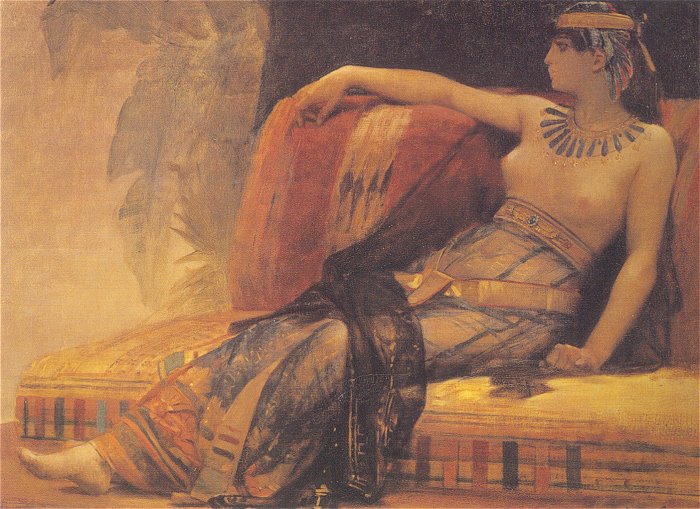By Jennifer Park
In Robert Allott’s edited prose commonplace book, Wits Theater of the Little World (1599), he introduces a section on beauty with this line: “Cleopatra writ a booke of the preseruation of womens beauty.”[1]

Today’s post is an introductory foray into the figure of Cleopatra as an apparent source of medical knowledge in early modern England, with recipes that apparently come from the “Book of Cleopatra.” During the time when Shakespeare was believed to have been writing Antony and Cleopatra, Cleopatra’s book was mentioned in a range of early modern works. What’s fascinating about the recipes attributed to Cleopatra is that they appear in a wide range of works, from secrets to cosmetics to surgery and medicine to natural history and the natural sciences.
To provide a brief example, I’ll begin with a few recipes that dealt with the problem of hair loss, found in a work on surgery, as well as in a work on, surprisingly, insects. The first is physician Thomas Bonham’s The Chyrurgian’s Closet (1630), a posthumously published compilation of his medical work.[2] Cleopatra is listed as one of the “Authors of this Worke,” and is referenced in two brief unguent recipes to restore hair growth, a concern explored for the early modern period by Jennifer Evans and for Graeco-Roman antiquity by Laurence Totelin. The first recipe is for greater ease of hair renewal and growth:
Rx. Cort: arundinis, & Spuma nitri, ana {ounce} ss. picis liquida, q. s. f. vng. *. To restore hayre in an inueterate Alopecia [or baldness]. It will be [ B] very profitable daily to shaue the place, and to rub it with a lin|nen cloath, and then to anoint it, by which meanes the hayre will grow with more speed. Cleopatra. [3]
The other is to preserve hair from falling:
Rx. Brassicae aridae, q.s. stampe it cum aq: q.s. vnto the forme of an vng: *. To preserue haire from falling. Cleopatra. [4]
Cleopatra’s expertise in this domain also appears in Thomas Moffet’s work on insects, which was completed in manuscript form in the 1590s and posthumously published. In his section “On the use of Flies”, Moffet mentions a recipe purportedly contained in Cleopatra’s book in which flies are used to treat baldness.

For Galen out of Saranus, Ascle|piades, Cleopatra, and others, hath taken many Medicines against the disease called Alopecia or the Foxes evill; and he useth them either by themselves or mingled with other things. For so it is written in Cleopatra’s Book de Ornatu. Take five grains of the heads of Flies, beat and rub them on the head affected with this disease, and it will certainly cure it. [5]
[Nam Galenus é Sarano, Asclepiade, Cleopatra, & aliis, medicamenta contra alopeciam exscripsit: iisdénique nunc solis nunc mixtis usus est. Sic enim in libro Cleopatrae de ornatu scribitur: R. muscarum capita.g.v. contere et affrica capiti alopeciâ laboranti, & certò sanabitur.] [6]
That Thomas Bonham and Thomas Moffet, who practiced medicine around the turn of the seventeenth century, both reference Cleopatra for these hair-related remedies establishes that they took for granted Cleopatra’s perceived expertise in this area.
Cleopatra’s medical knowledge primarily passed into early modern use through the work of Galen, the Greek physician whose work on the four humors would form the foundation of early modern medical beliefs about the body. Laurence Totelin, for example, provides an example of a recipe in Galen’s work, excerpted from “Cleopatra’s Cosmetics”. The figure of Cleopatra closer to her time was, it turns out, a figure closely associated with cosmetics, gynaecology, and alchemy. That Shakespeare’s Cleopatra—Cleopatra VII, former Queen of Egypt—was probably not the actual author of these receipts seems not to have mattered much for their transmission. Totelin documents a few such Greek cosmetic recipes that used her name and convincingly reads Cleopatra in early Greek medical writings as an example of medical authors claiming famous women as an authority for gynaecological and cosmetic remedies. The attribution of Cleopatra as the author or source of recipes in the early modern period is, I suspect, the inheritance of this practice put into use in posterity. Since the beginning, then, it seems that Cleopatra’s reputation has exceeded her.
What we get is a female figure whose relationship to medicine and to recipe-culture throughout the centuries was quite different from that of the early modern woman. Rather than having to develop and prove expertise in culinary, medical, and pharmacological knowledge by experimenting with receipts, as early modern women did, Cleopatra in the early modern period was already held to be a figure of medical authority. During a time when women were carving a place for themselves in the domain of household physic, Cleopatra may have been a shining example of a woman memorialized through her recipes as evidence of her medical expertise.
[1] Robert Allott, Wits Theater of the Little World (1599),75v.
[2] Thomas Bonham, The Chyrurgians Closet, or, An Antidotarie Chyrurgicall (1630).
[3] Bonham, 283.
[4] Bonham, 283.
[5] Translation quoted in John Uri Lloyd, “Ancient Therapeutics,” The Eclectic Medical Journal 76.4 (1916), 177.
[6] Thomas Moffet, Insectorum, sive, Minimorum animalium theatrum (1634), 71.
Cite this blog post
Jennifer Park (2014, March 6). The Recipes of Cleopatra. The Recipes Project. Retrieved April 16, 2024, from https://recipes.hypotheses.org/3434
Thanks so much for your post Jennifer. You may want to trace the medieval transmission of Cleopatra as a medical and gynaecological authority; I addressed it in an essay: Montserrat Cabré, ‘Beautiful bodies’,
Linda Kalof (ed.), A Cultural History of the Human Body in the Medieval Age. Oxford/New York: Berg, 2010, pp. 121-139 and 244-248.
Montserrat, thank you very much for the heads up! I’m excited to take a look at the article.
A delicious post. Was surprised by the quality. Precisely what I wanted to read. Please do keep up the awesome work.
Thank you for a marvelous read & references.